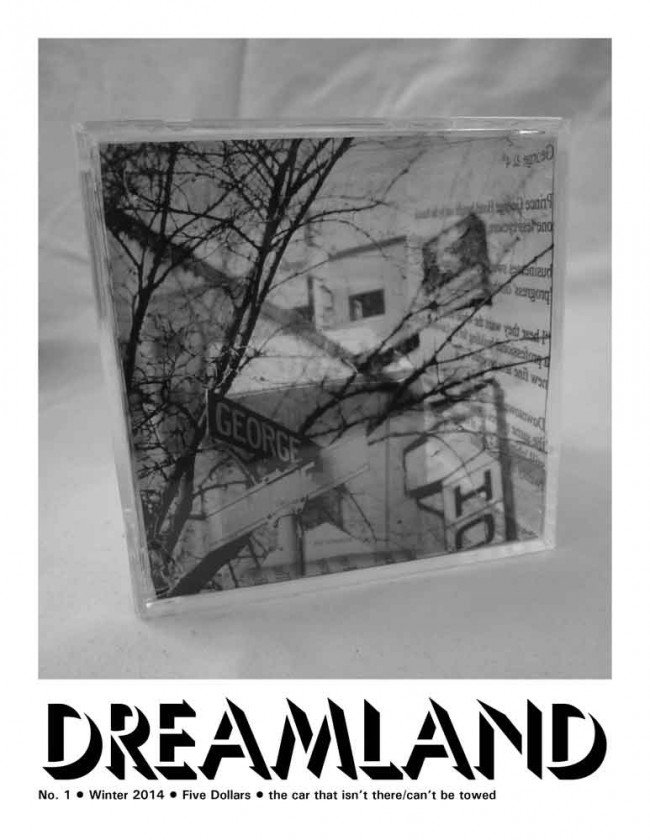
Theatre of dreams
Jeremy Stewart and I share a similar dreamland. This past/present/future Prince George is a small, independent nation of the imagination that, despite the odds, achieves its full potential of freedom, creativity, charity and peace.
Stewart’s dreamland, in part, is imprinted in the pages of his newest (though undoubtedly he will be up to something new by the time this hits print) venture: Dreamland magazine. Issue #1 was launched this spring in Prince George. “Dreamland” refers to a theatre that existed in Prince George nearly a century ago and I imagine it is the hardworking, messy and probably often disheartening reality of that theatre that inspires Stewart.
The image on the black and white cover, a reproduction of a facet of Erin Arding’s “PG Blocks” (a concrete poem on clear plastic blocks), is a blend of name (George St.), architecture, tree and (partially obscured) text. Such an image evokes many of the ways we identify with and create a place as our home—both familiar and strange at the same time.
The small-print tagline after the title reads, “the car that isn’t there/can’t be towed.” Stewart envelopes the issue with themes of place but also power (those who would tow) and resistance (refusing to have a car so you cannot be towed).
In the publisher’s note (versus editor’s note—perhaps a relinquishing of control?), Stewart addresses the “student of place,” writing that, “We’re all here imagining this place together” and asks, “Isn’t it good to do community in this way?” Stewart has changed the cultural life of Prince George in numerous ways—his writing and publishing, his music, his organizing—and he welcomes us to continue to build a new Dreamland for 2014.
The magazine is populated by characters from Prince George (Belford, Transken, Budde, Arding, Batting, Haslett, Rempel, Foster) and connected to Prince George via larger literary communities (Kennedy/mcpherson eckhoff, Dachsel, Massey, Denholm, Wugalter, Beach). This balance is a testament to how the imagined Prince George is influenced from a variety of communities (plural) from within, but also by its relationships outside city limits—a flow of energies and thought. Such a collection of literary directions produces the give and take of meaning:
Even places that are out on a limb
have something to say. Everything
has a voice unmediated by language.
(Belford)
The writing does not just build or create walls or colour-coordinate the blinds, it serves multiple functions—some not pretty, not fun, but all necessary:
sometimes she must use a poem as if it were a broom
or something heavier
(Denholm)
occupying the marginalized spaces
(Arding)
etching our names into imagined histories
and finding a smoothness that lets us be
(Foster)
or
To create in Prince George, a Paris of the 1920s
(Universal Assembly of Circus Dogs).
Collectively, like commingled species, writers work it out. Dreamland magazine sets the stage, adjusts the lighting, arranges the Styrofoam coffee sups, and stands at the door with a wide welcome.
We rehearse. We find our parts. The curtain rises in Prince George 2014.
To request a copy or to inquire about submissions email Jeremy Stewart at
jeremy@greenmilkcreativeumbrella.com.


